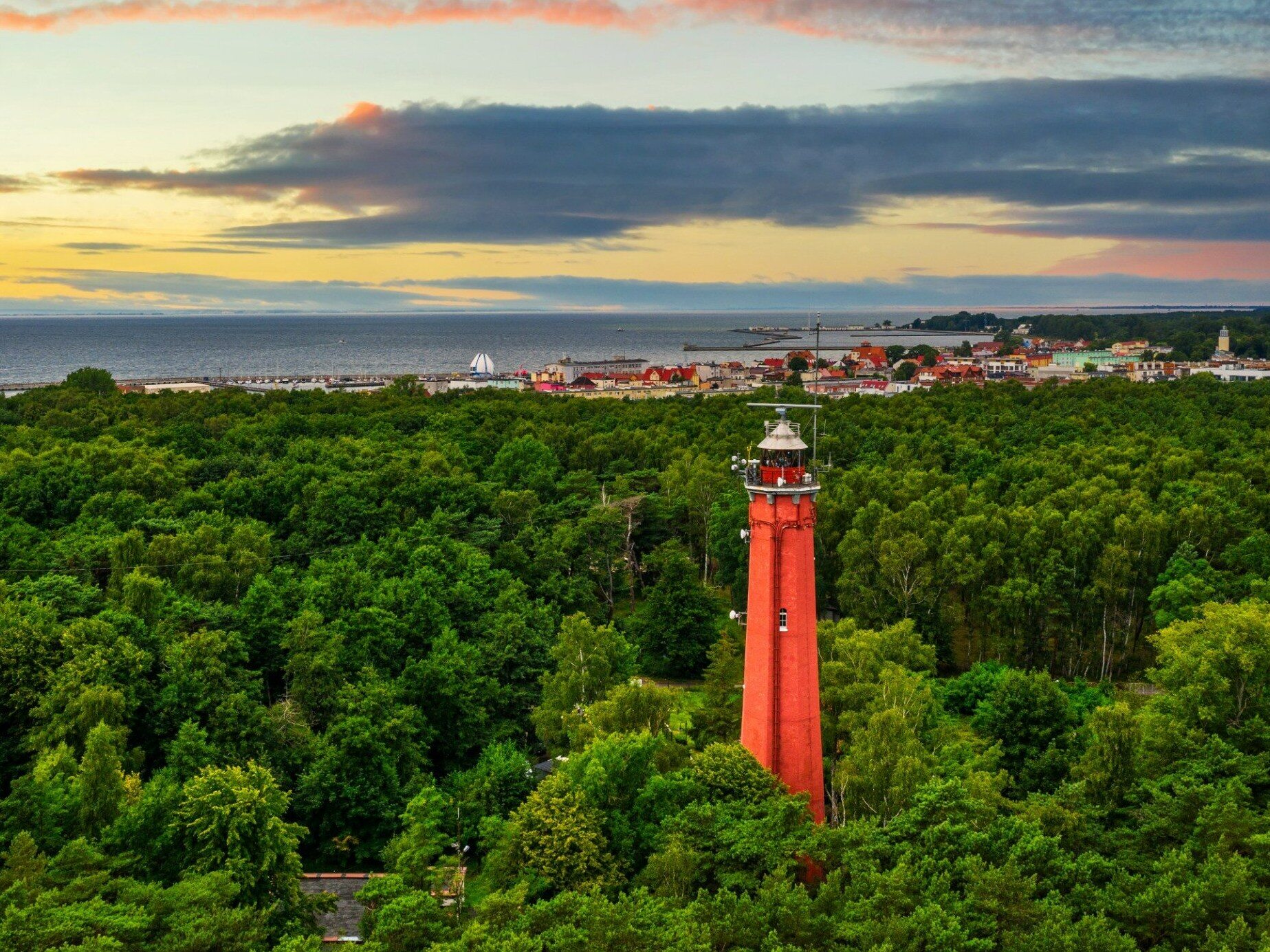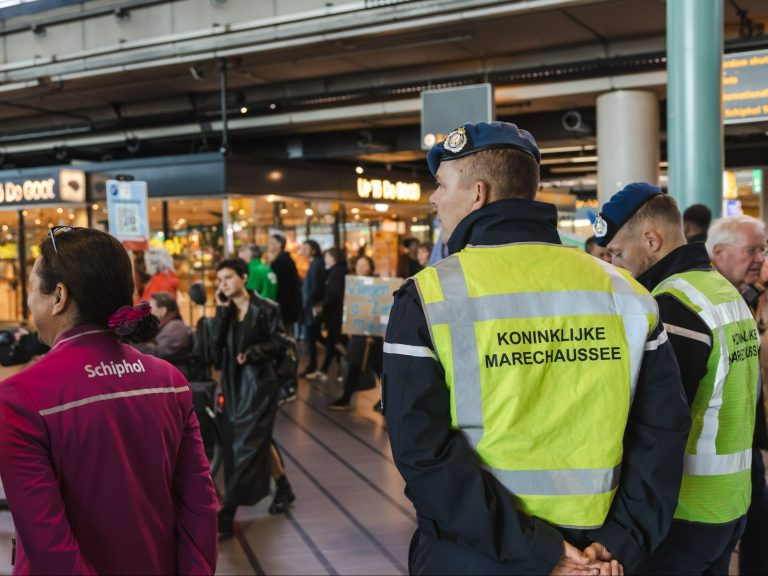An unusual trail in Poland. For those who persevere, unforgettable impressions and a badge await

A trail runs through the northern part of Poland, which will be of interest primarily to lovers of the sea and maritime infrastructure. However, we recommend the trip to everyone. It will be full of many tourist attractions, rich history and unforgettable experiences. Take a journey along the Lighthouse Trail and get a unique badge.
There is no shortage of tourist attractions in Poland that have a rich history and an unusual location that attracts the interest of holidaymakers. Undoubtedly, these include lighthouses, which mark a unique trail in the north of our country, just off the coast of the Baltic Sea. Their appearance and location is one thing, but it turns out that some of them can be visited. If we visit the available ones, we can get a unique Tourist Badge of the Lighthouse Lover “Bliza”. – We always encourage tourists visiting our lighthouse to try to get BLIZA, i.e. the Tourist Badge of Lighthouse Enthusiasts, especially since if someone manages to get a gold badge, they have free admission to all lighthouses in Poland available to tourists – says Piotr Piwowarczyk from the Świnoujście Organization tourist.
Lighthouse Trail
The Lighthouse Trail runs along the entire Polish coast of the Baltic Sea. Tourists can start sightseeing from the eastern side of our country, i.e. the Vistula Spit and the facility located in Krynica Morska, or from the western part, i.e. from the lighthouse in Świnoujście. As many as 13 objects of this type are available for sightseeing, but it is worth visiting all 17 lighthouses. A variety of light apparatus can be seen there, from cylindrical devices to systems equipped with reflectors. Naturally, you can also start “hiking” along the trail anywhere, but the east or west are the easiest way to organize this route.
To cover the entire trail, you have to take into account a road length of up to 550 km. Therefore, it is an excellent route to travel by car, van, motorhome or motorbike or even by bicycle. The latter option is a thing for persistent people in good shape.
Polish lighthouses
– We have 17 objects that are lighthouses. Of these, 15 serve the safety of navigation, and their administrators are maritime offices – the Maritime Office in Gdynia and the Maritime Office in Szczecin. The border between the offices is Jarosławiec. Two lighthouses do not serve safety – we are talking about the tower of the Rozewie II lighthouse and the Gdańsk Nowy Port Lighthouse, which was turned off in 1984. In its place, the Gdańsk Port Północny Lighthouse was incorporated. However, both appear under the name of Gdańsk – says Commander Apoloniusz Łysejko, vice-president of the Society of Friends of the National Maritime Museum (TP NMM) in an interview with Wprost.pl.
Lighthouses in Poland are located in various places. We can find them in national parks, health resorts, but also in large or popular tourist cities. Interestingly, each of them looks completely different. Some are taller, some lower, some are made of red brick, others of yellow brick. Some have one light, some have two. Some have oval lamps and others use led lamps.
“They were built by different people and in different years. Some are completely metal, such as the Stilo Lighthouse, the lighthouse in Jastarnia or half of the lighthouse in Rozewie, and others are built of stone or brick. Not only us, but the whole world built lighthouses in this way. And although they look different, their construction was guided by one principle – they were built at a distance of a ship’s sailing day, i.e. approximately every 40 km. That’s how much the ship was able to travel on average in 24 hours – adds Mr. Apoloniusz.
Lanterns also have different heights. For example, the Czołpino, Stilo, Jarosławiec or even Świnoujście lighthouses have heights close to 60 m. This is because from this height the light begins to be visible from the horizon. And such a principle of building a lighthouse was adopted.
What about handling these types of objects? It turns out that only one of the lighthouses is not man-operated – the Kikut Lighthouse. – At least one lighthouse keeper works on all other objects. It is there to take care of order around, but also to react when the light breaks down. It can happen. The lighthouse keeper does not allow himself to such situations, therefore he replaces the light bulb and maintains the apparatus. There is even a saying that in order to be a lighthouse keeper, it is good to be an electrician, reveals Apoloniusz Łysejko.
Visit lighthouses in Poland
If we decide to visit the lighthouse from the east, we will start our journey from the facility located in Krynica Morska.
Lighthouse in Krynica Morska (tower height: 26.5 m; range: 18 NM; commissioned: 1895) – open to visitors
The lighthouse on the highest hill in Krynica Morska was built by a craftsman from Elbląg, Edward Stach. It was not so much to show the way to the port as to fill the gap between Hel and the Baltic Sea. It was destroyed in 1945, but rebuilt after the war. It started its operation in 1951, and in the years 1957-1997 it also served as a radio beacon, sending the “KM” (Morse code) reconnaissance signal into the ether.
Lighthouse Gdańsk Port Północny (tower height: 56 m; range: 25 NM, commissioned: 1984)
It is the youngest lighthouse on the Polish Baltic coast. It is located in the port of Gdańsk. It has been operating since 1984, when it replaced the Gdańsk Nowy Port Lighthouse. Due to the fact that it is located on the territory of the refinery, it is excluded from tourist traffic. It is the only lighthouse in Poland with an elevator.
Gdańsk Nowy Port Lighthouse (tower height: 31 m; range: 17 NM; commissioned: 1894) – open to visitors
It is a historic and closed lighthouse. It was built in the Port of Gdansk in 1894. It was octagonal in shape and made of red brick. At the very top of the lighthouse was the so-called time ball, which was modeled on the London ball. It was replaced by the Lighthouse Gdańsk Port Północny.
Inside this lighthouse, which is open to the public, there is a small museum.
Historic Lighthouse in Sopot (tower height: 30 m; range: 7 NM; commissioned: 1904) – open to the public
Formally, since 1999, when the nominal range of the light was reduced to only 7 nautical miles (NM), it is no longer a lighthouse, but it is still customary to call it that. The observation tower with light is open to the public.
Hel Lighthouse (tower height: 41.50 m; range: 17 NM; launched in 1942) – open to visitors
The previous lighthouse in Hel was built in 1826, but was destroyed during World War II. This original object painted in wide stripes was considered one of the most beautiful on the Polish coast. In 1942, the lighthouse was rebuilt and today it can be visited. It is located in the forest on a promontory and you can see the nearby lighthouses from it. The entrance fee for an adult person is PLN 12.
Lighthouse in Jastarnia (tower height: 13 m; range: 15 NM; commissioned: 1950)
It is one of the smaller lighthouses of the Polish coast. Once it even served as a sound signal for the Stilo lighthouse located several dozen kilometers to the west.
Lighthouse in Rozewie (tower height: 33 m; range: 26 NM; commissioned: 1822) – open to visitors in the interwar period
This is undoubtedly the most popular of Polish lighthouses. It is located on Cape Rozewie, which is considered the northernmost tip of Poland. In the lighthouse we will find an exhibition that shows models of all lighthouses in Poland.
Stilo Lighthouse (tower height: 33 m; range: 23.5 NM; commissioned: 1906) – opened to the public in 1992.
Stilo is one of the least accessible, but at the same time one of the most beautiful and photogenic lighthouses in Poland. It is located in the village of Osetnik and was built in this area due to the grounding and beaching of many ships at the turn of the 19th and 20th centuries.
Lighthouse in Czołpino (tower height: 25 m; range: 21 NM; commissioned: 1875) – open to visitors
The lighthouse in Czołpino is located on a dune in the Słowiński National Park. And although it is only 25.2 m high, due to its location on a high hill, its light is at a height of 75 m. It is very classic in appearance and can be visited.
Lighthouse in Ustka (tower height: 20 m; range: 18 NM; commissioned: 1871) – open to visitors
It is located on the eastern side of the breakwater, at the mouth of Słupia to the sea. It is an extremely interesting architectural structure, consisting of an octagonal tower and a slightly lower lighthouse keepers’ building adjacent to it. Concrete and metal steps lead to the top of the tower, and the system of lenses can be observed through the gallery windows. In 1993, the lighthouse was entered into the register of monuments. When visiting this facility, it is worth asking the guide about the ghost that supposedly lives in the lighthouse.
Lighthouse in Jarosławiec (tower height: 33 m; range: 23 NM; commissioned: 1838) – open to visitors
The lighthouse together with the lighthouse keeper’s house and utility rooms constitute the entire complex. From its balcony you can watch the sea and two coastal lakes.
Lighthouse in Darłowo (tower height: 22 m; range: 15 NM; commissioned: 1715) – open to visitors
It is an easily accessible lighthouse, located right at the mouth of the Wieprza River and at the very entrance to the port in East Darłówko.
Lighthouse in Gąski (tower height: 50 m; range: 23.5 NM; commissioned: 1878) – open to visitors
The lighthouse complex, including the lighthouse, the lighthouse keeper’s house, the barn, the livestock building, the fence and the wall, have been entered into the register of monuments.
Lighthouse in Kołobrzeg (tower height: 26 m; range: 16 NM; commissioned: 1899) – open to visitors
This lighthouse is located in the spa. Inside, there is a museum and a cafe. No wonder it’s a popular tourist destination.
Niechorze Lighthouse (tower height 45 m; range: 20 NM; commissioned in 1866) – open to visitors
Not only does it have an unusual shape, it is located on a 20-meter cliff. It is considered the most beautiful lighthouse in Poland. It is square at the base and later turns into an octagon.
Kikut Lighthouse (height: 18 m; range: 16 NM; commissioned: 1826)
The completely maintenance-free lighthouse is considered the highest located in Poland. All because it is located on a 75-meter cliff, and its light is as high as 93 m above sea level. Unfortunately, you cannot visit its interior.
Lighthouse in Świnoujście (tower height: 65 m; range: 25 NM; commissioned: 1854) – open to visitors
A unique lighthouse made of brick, which is considered the highest building of this type in Europe. – There are disputes about the place we occupy if we take into account all lighthouse constructions in the world, but we are certainly among the top ten of the tallest lighthouses in the world – says Piotr Piwowarczyk from the Świnoujście Tourist Organization.
The popularity of lighthouses in Poland is really big. It is estimated that from May to September, when the visiting season lasts, they are visited by up to 1 million people. And which of the Polish lighthouses is the most popular? – Lighthouses in Rozewie and Niechorze enjoy the greatest interest – says Apoloniusz Łysejko. The lighthouse in Świnoujście would probably still be very popular, but access to it is difficult. You can only get here by water.
In 2006, all lighthouses were included in the project, thanks to which lovers can receive a unique badge. We are talking about the “Bliza” Lighthouse Lover’s Tourist Badge. How to get it?
The bronze badge can be awarded to a person who visits any 5 lighthouses in Poland in a period not longer than two consecutive years. The silver badge, in turn, can be obtained by a tourist who already has a bronze badge, and also documents a visit to the remaining lighthouses in Poland available for sightseeing. In turn, the gold badge can be obtained by anyone who has a silver badge and documents a visit to three foreign lighthouses. Obtaining the latter award also gives you the opportunity to visit all the lighthouses in Poland for free.






